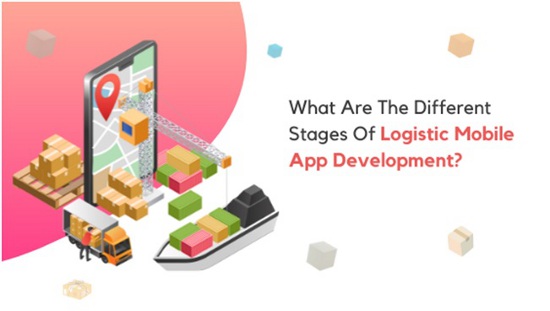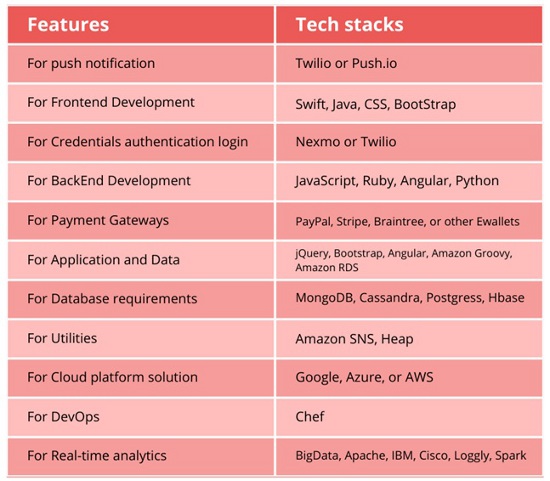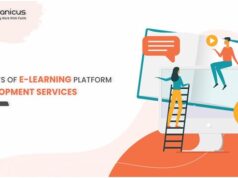Previously, keeping a continual eye on all management processes at the same time was extremely difficult. For example, it was difficult to see how much time drivers used to spend examining the load board or how long they take breaks. Apart from that, it was challenging to maintain track of the trucks that were not carrying any cargo. Because of the logistics industry’s extremely fragmented structure, which includes multiple divisions such as warehouses, fleets, and delivery management, similar situations used to emerge.


However, with the advent of smartphone apps, everything has become much easier. The most famous example of this is the Uber for Transportation app. It has altered logistical regular duties and played a critical role in simultaneously tracking all operations. If you have plans to get a logistic app, you must go for Logistic app development services for better assistance.
Logistic Mobile App Development Benefits
• Integrating GPS Technology
You can notify your customers when their goods will arrive using GPS technology. It also aids management employees in keeping an eye on their trucks at all times.
• Eliminates Paperwork
Mobile apps eliminate the paperwork which used to be very hectic for people. A slight mistake on papers leads to a severe misunderstanding. Logistics apps eliminate the errors or at least reduce the chances of having errors.
• Enhance Customer Satisfaction
It enhances customer experience at a huge scale as it predetermines the cost of scheduling shipments and average fuel costs. Apart from this, it also eliminates the empty miles.
• Warehouse Management Gets Easy
Stock storage and freight distribution are boosted with built-in information and barcode scanning features included in the warehouse management app.
• Efficient Fleet Management
Another benefit of logistics apps is efficient fleet management. The reports and charts allow you to track vehicle and driver details. In addition to this, calculating fuel consumption, optimizing routes, and measuring overall fleet performance gets easy with the mobile app.
How To Make A Logistic App?
The creation of a mobile app is a fast-paced process. There is no assurance that the app will be successful unless it has passed through a planned development stage that covers all the essentials of mobile app development. Let’s discuss the crucial stages of how to develop a logistic app :
Select The Type Of App
Logistics apps differ by the company goals, requirements, end-user, and functionality because logistics encompasses various areas which are divided into three segments. You’ll have to choose the type of application you want at this point. This might be on-demand, fleet, or warehouse logistics.
- On-Demand Apps–Ondemand apps might help your business earn more money. Trucks aren’t usually fully loaded, so if the driver has some extra space, drivers will be able to pick up some additional cargo while on the road.
- Fleet – The fleet logistics app was created with the goal in mind that fleet owners can easily track information about their vehicles and keep them running on time. It will assist you in keeping track of, managing, and storing information about your trucks.
- Warehouse Apps – When you own a warehouse, you have to make sure that your cargo will arrive there on time. A warehouse app simplifies warehouse management by letting you check details and track domestic and international freight easily.
Set The Target Audience
The first step you need to take to ensure that your logistics app succeeds in the market is to identify and define the target audience. It will also help you understand why your customers would choose your brand over your competitors. This is the first stage that is followed in almost each mobile app development process.
Choose The Platform
Then comes the stage where you have to pick a platform for your app. It is very important to choose the right app platform according to your targeted audience. If you want to target a large user base, you can go with android and if you want to run your app as an in-app purchase you should go with iOS. It is because, as compared to the android user base, people with iOS devices are willing to spend more. Last, if you want to target more people, you must go with both of them.
Choose The Type Of App
Apps designed for mobile devices use a wide range of programming languages and frameworks. While iOS and Android are the most well-known operating systems as they’ve done a good job of standardizing the types of portable app development available to software professionals. Here are a few examples of app types that can be used in a variety of situations:
• Native Apps – These are apps developed for a specific platform using the software development tools and dialects supported by those operating systems. Android is dependent on Eclipse and Java, while iOS uses Xcode and Objective- C to enhance user experience. Native apps are frequently preferred by designers due to their ability to fully utilize a device’s capabilities.
Designers are creating extraordinary programs that incorporate technology like wearables, IoT-related sensors, and smart screens for personalized experiences as smart home gadgets have become more common. Platform advancements take a lot of time and money that does not work for many organizations.
• Hybrid Apps – These apps entail the creation of a holder in the native system that allows an HTML5 app to be inserted within it. Due to this app can take advantage of the unique features of each native system. Consider leveraging an existing app and thoroughly analyse its features before creating your own app. For example, you can send visitors to both your website and your actual location by leveraging mobile zeroed-in marketing on sites like Facebook, and Google Maps.
Find A Reliable App Development Company
Find an experienced and reputable mobile app development firm that fits your budget. Your half of the job gets done once you’ve found a suitable development team. Many development businesses offer a full-cycle development approach that takes your logistics app from concept to market-ready status. Examine platforms such as Clutch or GoodFirms, LinkedIn, and technical blogs to locate the finest developers.
Explain what you anticipate seeing in the final product and the deadlines once you’ve selected a development team. Don’t forget to sign a non-disclosure agreement (NDA) as it will keep the details of your application private.
Create A Minimum Viable Product (MVP) For Your Logistics Software And Deploy It
Creating an MVP (minimum viable product) will be the first step before the development of the feature-rich app. MVP can be a virtual blueprint of the app as it depicts the functions of the app and the company’s idea. The development team has to perform the following to create an MVP:
• Make a plan for the app’s MVP development – Based on the specification, the team prioritizes the functionality of the app and develops a roadmap for the MVP. Each MVP user story is documented in the project roadmap along with its iterations for implementation.
• Begin the development process – To begin the development process, the team begins putting user stories into action under the development strategy. Each month, the team will conduct a demo to demonstrate a ready-made part of the app at the end of an iteration.
• Release the app’s minimum viable product (MVP) on marketplaces – As soon as the MVP of your logistic app is complete, the development team runs the final demo and releases the app to the Apple Store or Google Play, whichever is selected. This is the phase where you are given complete access to your app, the database, the code of the app, and another set of project-related documents.
Marketing
At last the marketing factor comes which matters the most if you have to survive in this competitive market. The mobile app market bolsters mobile commerce. Today, people have relied on their mobiles, due to which they have started availing services online. Mobile phones have become an integral part of people’s life. Mobile apps are revolutionizing everything from scheduling a doctor’s appointment to shopping for groceries at home. Mobile apps are promoting mobile eCommerce in this way, and they are playing a critical role in enhancing a company’s growth chances. However, in order to reach the intended demographic, the app must be well-marketed.
How To Monetize The Logistics Mobile App?
You must consider your app’s monetization tactics while planning the app development phases. Because there is no point in having an app on the market if it isn’t making money. Here are some monetization options for you to consider: –
• Commission – App owners can charge a particular commission from the drivers who are using your mobile logistic platform. This is the most common earning strategy that logistic app owners follow.
• Advertisement – Apart from the commission, you can use your app to show advertisements of the third party. You can apply this strategy to the users who are using the free version of your app. However, avoid showing unneeded and numerous adverts; it frustrates consumers, and there’s a risk they’ll stop using your app.
• Freemium Business Model – Users are drawn to this monetization model. Because the fundamental features are free to use while customers have to pay a fee for advanced functionality.
• Paid Apps – This revenue-making model is also very famous in the market. In this model, users can pay a one-time charge for a lifetime license to use the software under this monetization strategy.
• Paymium Model – If your software is highly useful and has a strong USP, people will pay for both the app itself and the extra features that are accessible.
How Much Does It Cost To Develop A Logistic App?
Several elements are there that influence the cost of the logistics app development, including:
• Platform Selection
Generally, the cost of an app developed for a single platform cost less than it is being produced for multiple platforms. It is because all platforms have different coding and different rules which has to be fulfilled that’s why app development companies have to work with two teams to develop an app for more than one platform.
• Location of App Development
Your app development costs will vary according to the country you choose. The hourly rate of developers varies as per the country in which you choose to develop your app in. For example, European countries usually charge higher of app development as compared to Asian countries. So, choose the country wisely by keeping your budget in mind.
• Features & Design
A simple design and a basic set of features will cost less than a complex app with advanced functionality. A final factor in determining the cost is the complexity of the app. Overall, a basic app with minimal features costs around $8000 to $15000 if you avail of logistic app development services from the Asian region. While the app with sophisticated features costs around $15000 to $30000. This applies to both Android and iOS.
Technology Stack For Logistics App Development


Conclusion
Due to the multiple benefits that a logistics application offers, the emergence of many types of on-demand logistics applications in the future will ultimately make the logistics industry thrive. Now could be the best time to invest in Transportation app development services. Hire a committed team from a reputable logistics application development business. We will be happy to help you.









